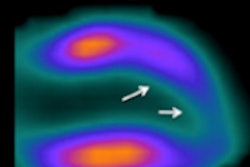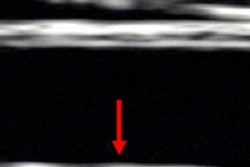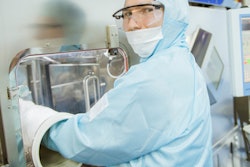
BRUSSELS - The tricky question of how to measure the cost-effectiveness of molecular imaging is more a question of economics than it is about medicine, according to GE Healthcare executive David W. Lee, PhD. While the life-saving qualities of nuclear medicine might seem obvious, their real benefit for society depends on both the cost of the technology and the value people place on their health, he told a symposium on molecular imaging organized by the Association of Imaging Producers & Equipment Suppliers (AIPES) in Brussels last Wednesday.
"Technologies are cost-effective when their additional cost is 'acceptable' when compared with health outcomes gained," said Lee, who is the company's general manager and head of market access. "Is it worth paying 40,000 euros to prolong a life? That is a value judgement."
 Personalized medicine is unprovable, and decision-makers need to get comfortable with the resulting uncertainty, David Lee, PhD, said.
Personalized medicine is unprovable, and decision-makers need to get comfortable with the resulting uncertainty, David Lee, PhD, said.He looked at different outcomes, through measures like quality-adjusted life year (QALY), disability-adjusted life year (DALY), life-year gained (LYG), and health utility index (HUI).
"Ultimately, it is a societal question about whether you pay 200,000 euros per year for this treatment," said Lee, adding that this varied according to the procedures. "The cost-effectiveness of PET/CT has been established in several cancers, and is promising in many others."
He said the value of PET/CT, in the initial treatment, was it improved staging accuracy, which in turn boosts the effectiveness of treatments and survival chances. The technology can be used to help assess treatment response, stop futile therapies, and allow doctors to try alternatives -- again improving survival chances. In economic terms, the real benefits lie in the greater certainty about providing the right treatment.
For example, when it comes to colorectal cancer, Lee's research found while there was no major change in patient outcomes, PET/CT led to cost savings on average of 2,671 pounds (3,102 euros) because there were fewer unnecessary surgeries or other treatments. In the case of neck dissections, PET/CT meant surgery was reduced from 78.4% to 19.1%, again with no difference in patient outcomes.
Lee said one of the reasons that molecular imaging was hard to sell was due to clinical equipoise, the uncertainty amongst doctors over whether a particular treatment will be beneficial. "It takes a special kind of decision-maker to say: I don't know, but this is the likely scenario," he noted.
This uncertainty risks paralyzing the medical community when it comes to personalized medicine, he warned.
"There is an opportunity cost of doing nothing. That is our default position," he said. "But ultimately, personalized medicine is unprovable -- you have a clinical trial of a group of just one. When you don't have the certainty of a trial, you have to take a risk as a decision-maker. And decision-makers need to get comfortable with that uncertainty."
 Don't write off SPECT/CT, Dr. Carl von Gall urged.
Don't write off SPECT/CT, Dr. Carl von Gall urged.At the same event, Dr. Carl von Gall from Siemens Healthineers argued that SPECT technologies still had a role to play in healthcare, even if it was seen as less sophisticated that PET/CT.
"PET/CT is the latest and greatest. And SPECT/CT is trying to catch up," said von Gall, who is the company's manager for global clinical marketing in molecular imaging. "PET/CT is trying to answer more sophisticated questions in a research setting. But SPECT/CT is ready for the challenges."
He said SPECT scans are much more widely used -- some 34.6 million applications annually compared with 8.6 million for PET/CT -- and more available and cheaper. And crucially, SPECT is better at showing changing shapes.
"Can we afford imaging that only gives you a shape?" he said. "You need to find the function. For example, a lymph node that changes its function will change its shape."




















